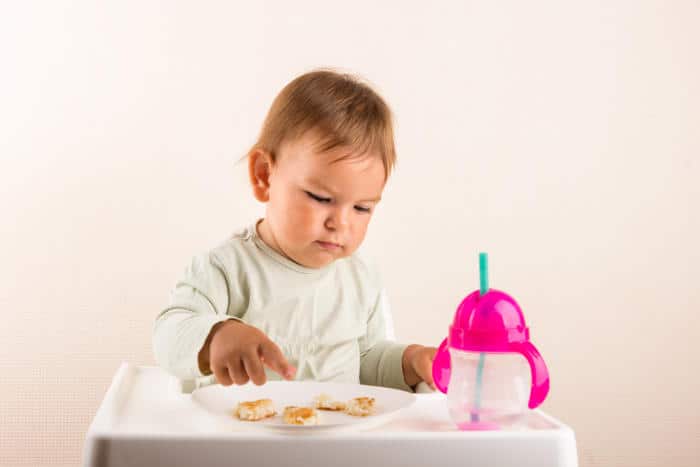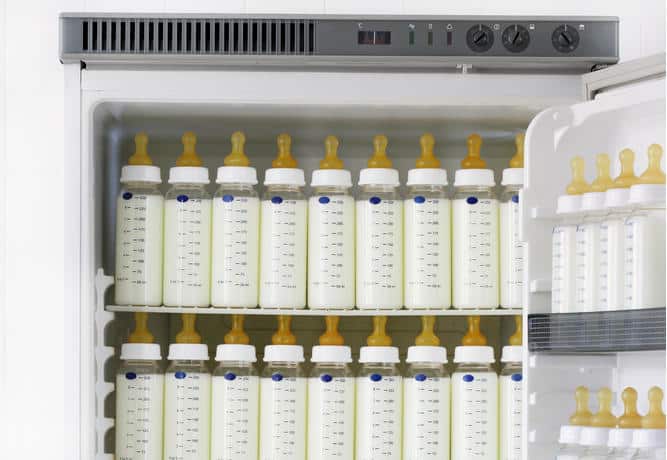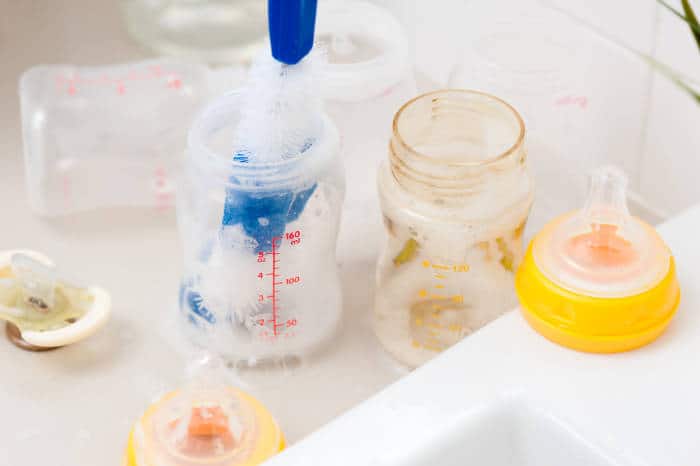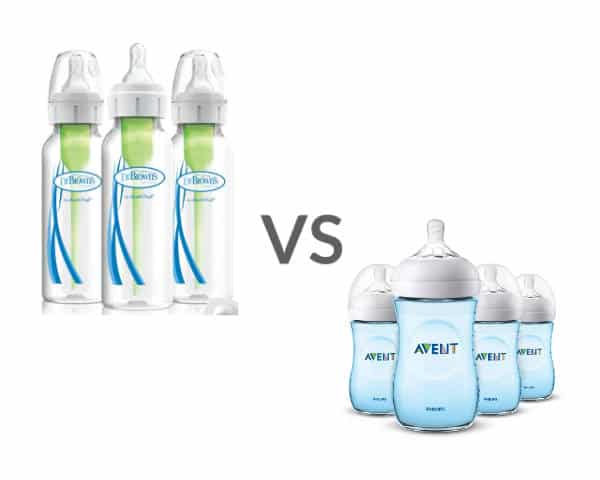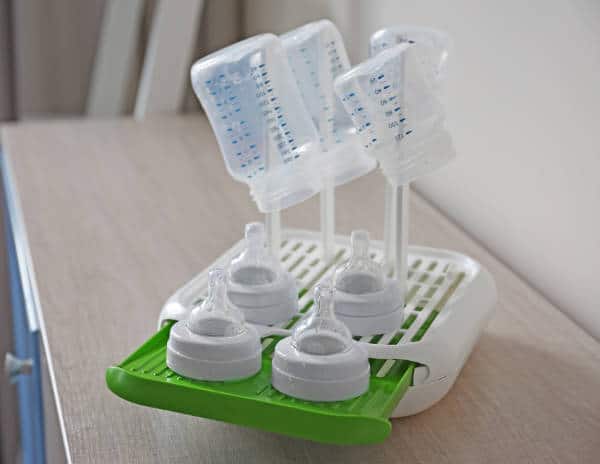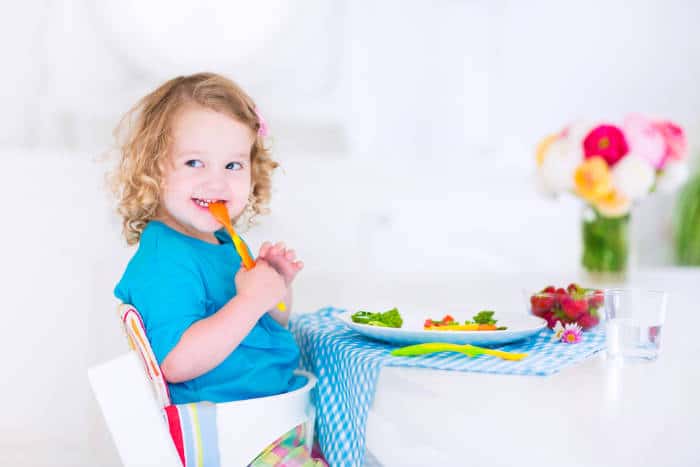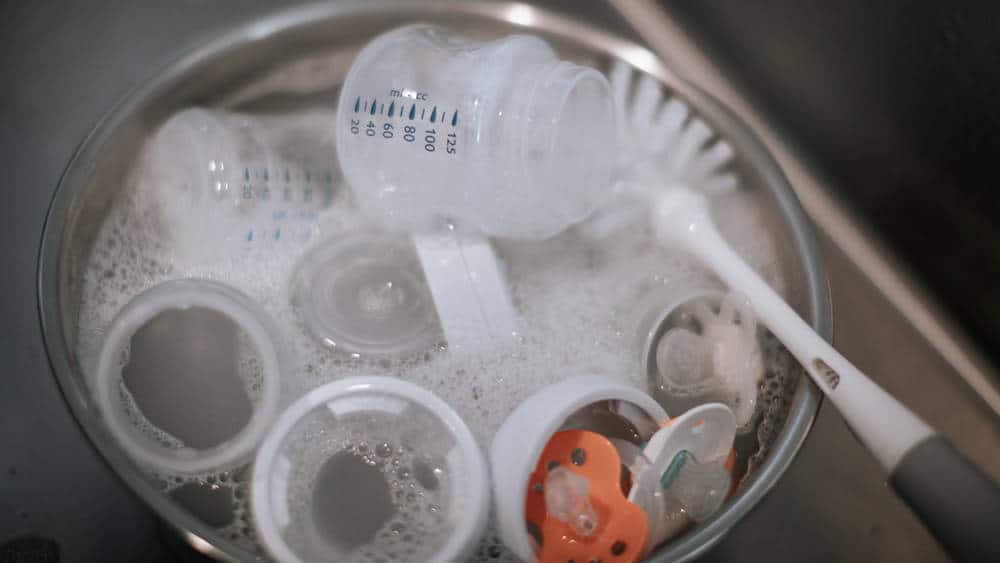Bottles and babies, babies and bottle feeding. They seem to just go together, right? You see a baby on television and they’re drinking a bottle. Baby dolls in stores usually come with bottles. Well, imagine my shock when I realized the baby I’d been nursing for six solid months would not take a bottle under any circumstances. That was baby number one.
Apparently, it’s not something that comes naturally if they aren’t exposed to it. Thus, my journey as a stay-at-home-parent was born. However, that’s not what I intended and when I got to my second and third child, I vowed to never make that mistake again, for my sanity, at least.
Getting a breastfed baby to take a bottle takes practice, dedication, and lots of patience. For some, it might be easy. For many, it’s not. That’s why we’ve rounded up some of the best information and advice on giving breastfed babies a bottle. Have a look below and keep these tips and tricks in mind when you go bottle shopping and when it’s time to pump your milk supply into a bottle and transition a breastfeeding baby to take a bottle.
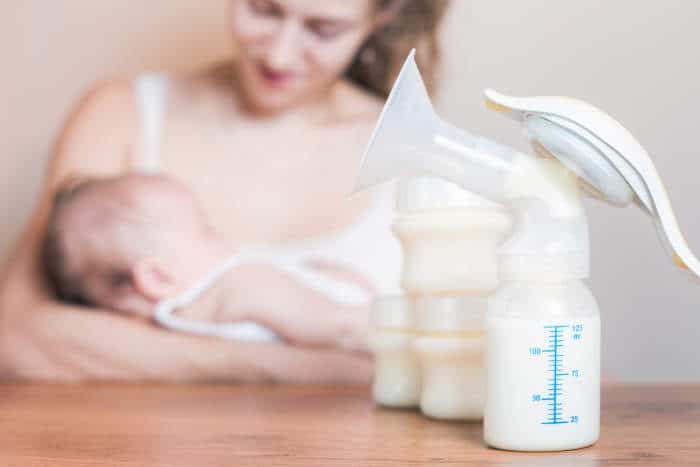
Why you might want your baby to take a bottle
- Mom is going back to work. This is probably the most obvious reason for incorporating bottles into your breastfeeding journey. Once maternity leave is over, someone else will be tasked with feeding the baby, and getting them to successfully take a bottle will improve the experience for everyone involved.
- Mom wants other people to bottle feed the baby so she can get a break. While breastfeeding is an enjoyable experience for most women, that doesn’t mean she won’t need a break. Letting other relatives or caregivers bottle feed your little one will free up time for date night, an uninterrupted shower, sleep at night, etc. (Personal note: My first two didn’t take to bottle feeding. We made it a priority for the third baby and it was a life changer!)
- An unexpected emergency requires it. Let’s say you become ill or require surgery. While most hospitals are very accommodating to breastfeeding mothers, that doesn’t mean the situation will be ideal. In a pinch, you might want to try introducing a bottle so others can help care for the baby if you find yourself in need of rest and recuperation.
- You want other people to have the bonding experience. While it is not at all necessary for relatives to feed your baby in order to bond with him/her, many families will elect to give bottles to provide that opportunity. However, that should be completely up to the parents. If you would like for that to happen, introducing a bottle may help family members to feel involved.
Selecting bottles for your breastfed baby
Not all bottles are created equal. Most of the time, parents want anti-colic, BPA-free, dishwasher safe, etc. However, breastfeeding parents that want to incorporate bottles while also continuing to breastfeed, could benefit from bottles with natural nipple shapes. That will help decrease nipple confusion, bottle refusal, and overall frustration. You can pick up different bottles and see what your baby prefers before buying a complete set. Keep in mind that the milk flow of a bottle is different from breastfeeding, consider getting a slow-flow nipple as well.
There’s a lot to think about…materials, shape, washing. That’s why we’ve already done a several deep dives into the kit you will need. The best baby bottles, the best bottle sanitizer and even which is the best bottle brush!
When to try feeding a bottle
If you’re a new parent or haven’t breastfed a baby before, you may be thinking that the timing of bottle feeding doesn’t matter. However, a lactation consultant will most likely tell you that bottle-feeding immediately after birth can lead to nipple confusion which can complicate the breastfeeding journey.
When a baby is brand new, they’re still learning how to latch and express breast milk. However, milk flows differently from a bottle and the breast. Therefore, experts usually recommend waiting a few weeks before attempting to give a bottle. That’s entirely up to the parents though and there have likely been babies that can go back and forth between bottle and breast without an issue. If you know you’ll eventually need to rely on bottle-feeding though, it’s best to start sooner rather than later.
Creative tactics to try
Even if your baby acclimates to the bottle and transitions seamlessly, there may be some resistance each time another caregiver tries to start their feeding. For example, say you have been home over the weekend, without the need for a bottle. When you go back to work on Monday, the other parent or sitter may struggle to get the baby to take the bottle. That’s when it might be necessary to get creative…
- Squeeze the bottle nipple to drip milk into the baby’s mouth so they understand that there is milk in there. Alternatively, dip the nipple in the expressed milk and see if your little one will suck on it.
- Have the person giving the bottle wear a shirt or robe that smells like mom
- Have the same person give the bottle each time (not mom) so they learn to associate that caregiver with feeding
- Eliminate distractions
- Experiment with different bottles
- Offer the bottle before the baby starts to show telltale signs of hunger
- Mimic the position they’re in while nursing
- If nothing else works, La Leche League offers the suggestion of a cup of breast milk and a syringe


